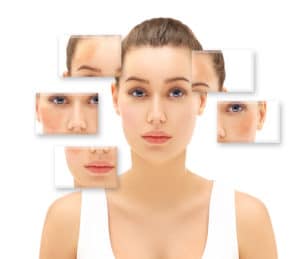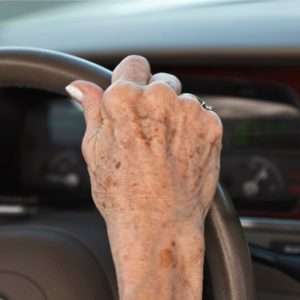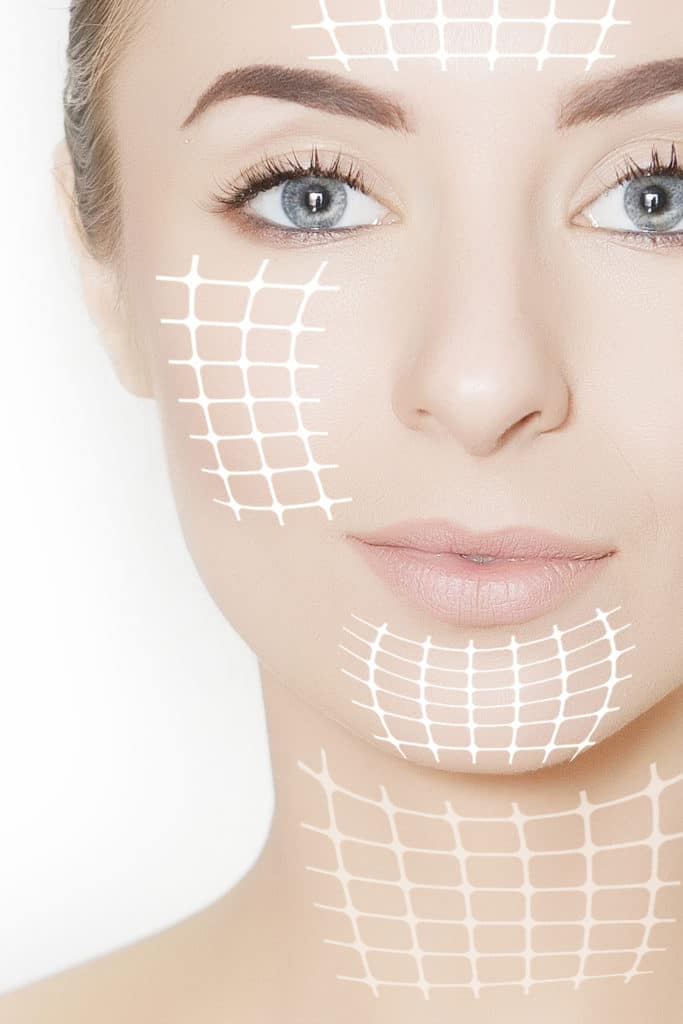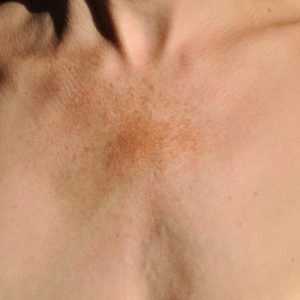Hyperpigmentation Treatment
in Raleigh NC

This is hyperpigmentation. At Skin & Cosmetic Solutions we have various treatments that address hyperpigmentation for our patients. Here’s more about those dark patches on your skin.
Contact Us Today For A Consultation
What is hyperpigmentation?
Dermatologists such as Dr. Puente and Dr. Shearer call those darker patches or spots on your skin areas of hyperpigmentation. You call them age spots, liver spots, and far less flattering terms. These darker areas are usually due to excess melanin production in those skin cells. We all used to chase increasing melanin in our skin through tanning, but we know now that’s it a good idea to limit our sun exposure.
When the skin produces more melanin, the pigment in the skin becomes darker. There are different forms of hyperpigmentation. Some types of hyperpigmentation such as sunspots or melasma occur in areas of sun exposure. Other types of hyperpigmentation develop after an injury or skin inflammation, such as cuts, burns, acne, or lupus. These can occur anywhere and are not dependent upon sun exposure.
What causes hyperpigmentation?
Hyperpigmentation can have different causes, although it always comes down to the body producing excess melanin in the area.
Excessive sun exposure
At Skin & Cosmetic Solutions, we usually see hyperpigmentation caused by sun exposure. We’ll see sunspots and patches of darker skin on areas constantly exposed to the sun: the face, neck, shoulders, and backs of the hands.
Medications
Certain drugs can cause a melanin bump, as can chemotherapy.
Hormonal changes
Melasma often called the “mask of pregnancy,” can create widespread areas of hyperpigmentation. Fluctuating hormone levels are behind this increase in melanin production. Melasma usually clears when the pregnancy is over.
Areas of injury
Burns, cuts, and other skin injuries can cause an increase in melanin. That’s why some laser procedures cannot be performed on darker skin tones, as hyperpigmentation can be a side effect.
What are the risks of developing hyperpigmentation?
While you can’t always prevent hyperpigmentation, such as during pregnancy, there are ways to lower your risk. These mainly involve sun exposure:
Use sunscreen with at least 30 SPF
- Wear hats or protective clothing
- Avoid the sun between 10 a.m. and 4 p.m.
- Be cognizant of medications that can cause melanin increase
Hyperpigmentation isn’t harmful, and it isn’t a sign of more serious medical conditions. It is an aesthetic nuisance.
Who is a good candidate for hyperpigmentation treatment?
These are cosmetic treatments performed because the patient doesn’t like the appearance of these dark spots or patches of darkened skin. Anyone with areas of hyperpigmentation is a good candidate for our various treatments to help lessen or remove these areas of excess melanin.
- Age spots usually begin to show up on older adults after years of sun exposure.
- Melasma occurs in pregnant women and women taking birth control pills.
- Post-inflammatory hyperpigmentation occurs in people who have had inflammation or an injury to the skin.

What are the treatments for hyperpigmentation?
The best offense when it comes to sunspots and the like is a good defense — sunscreen. Wear 30+ SPF when you’re outside. The days of the Coppertone Girl and her highly contrasted tan line are over.
When you want to get rid of your skin with hyperpigmentation come to Skin & Cosmetic Solutions and we’ll discuss which treatments will be right for your skin. Here are some options we use:
Laser or IPL treatments
Laser light and Intense Pulsed Light are effective for targeting the areas with excess melanin. We match the wavelength of the laser or IPL energy to match the pigment in your sunspots. The focused beam of energy breaks up the dark spots and the body then eliminates the fragmented pigment particles.
Fractional resurfacing
Fractional laser resurfacing is good for larger areas. We can treat the entire face with our fractional laser treatments. These microscopic punctures through the epidermis down into the dermis trigger a wound-healing response in the skin where old cells are shed and new skin cells and collagen are produced to “heal” the wounds. This can dramatically reduce larger areas of hyperpigmentation that wouldn’t respond to more targeted laser treatments.
Chemical peels
Exfoliation is key to removing the upper layers of dead skin, and there is no better exfoliation than our chemical peels. When our peels remove the dull outer skin, the healthier skin revealed reflects light better and appears to glow. This reduces the appearance of dark spots.
Microdermabrasion
Microdermabrasion also removes the outer layer of dead skin cells, using sprayed on crystals instead of chemicals to do the job. It is best for milder hyperpigmentation.
Microneedling
By creating thousands of microscopic wounds across the skin, microneedling also triggers the skin to heal itself. This encourages skin cell turnover and lots of new collagen production. It also improves skin texture while helping shed those areas of extra melanin.

What happens if I don’t treat my areas of hyperpigmentation?
Hyperpigmentation isn’t dangerous. It’s simply a harmless skin reaction, usually to the sun or other inflammation, where the body ramps up the production of melanin to protect the skin. Remember the days when everyone wanted to get sun and become more and more tan? That darkening in the skin? That was good old melanin doing its best job of darkening the skin to protect it.
Most of us aren’t big fans of sunspots, freckles, and patches of darker skin, though. So, come see us at Skin & Cosmetic Solutions and we’ll help you get rid of your hyperpigmentation.
Schedule a Consultation Today!
To learn more about hyperpigmentation treatment, please fill out our contact us form or call 919.876.9576 today!


 Use sunscreen with at least 30 SPF
Use sunscreen with at least 30 SPF